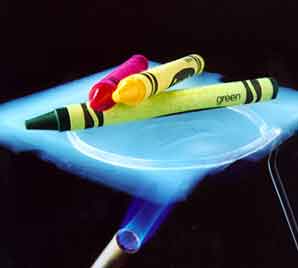How Globes are manufactured for school projects
How Globes are manufactured
The globes tells us where we are in the world and helps us figure out where we are going. As globes comes in many different languages because there is a worldwide demand for them. As because the world is round, the flat maps do not gives us the full picture. A globe is the most accurate map of the world because its depicts countries in true special relation to one another. It also defines better latitudes and longitude. Globes really gives us a well rounded view of our planet.
Read Similar: How is Silver processed / made – extracted & purified
Globe production
At the factory, the production revolves around world events. As war and political upheaval redraw boundaries. So these spherical maps are revised accordingly. To make a globe, the workers start with a big roll of cardboard. A machine pulls it under a roller that coats with a glue. Then a knife slices the cardboard into smaller pieces which will serve as a liners for the maps. One more coat of glue and then they will stick the liners to the back of maps of hemispheres. The heated rollers press them together completing the seal. Each map is of a hemisphere and the printout fans like a pinwheel. A powerful press now cuts the maps along those lines. The worker position each map carefully in the cutting press. After all, one false move and they could lose part of Europe. As it will take two punch cuts to do the job.
The workers then pull away the excess paper between the twelve spoke like sections of the map. The cutting press acts like a giant fist to punch out the map pinwheels. For shaping the globe, the workers place a map cut out and a separate liner in a mold of half a globe. Then it rises into a heated cavity and presses them into a bowl like shape. Now they have a hemisphere, the workers then make the southern hemisphere with the same type of mold.
The molds also emboss each map to signify peaks and valleys on the earth surface. As they raised the indented sections of the molds, make impression on the globes, that allows the people to see and feel variations in the world’s topography. Both above the ground and under water. The hemisphere are now complete and it’s time to go global.
Globe northern & southern hemisphere
The workers in the factory spin a northern hemisphere while a razor blade trims the edges. Then a lower hemisphere goes for a spin while a nozzle beads a hot glue along the inside. Finally a stiff cardboard ring adheres to it and gives the hemisphere some reinforcement along the equator. The workers then applied glue to the northern hemisphere and fits over the ridged edge of the southern one.
Now they precisely align the two halves and then the workers tape over the scene, as to marks the equator. Now they mount each globe on a pedestal that is attached to a metal arc known as meridian. Suction to the top of the globe, the meridian will allow it to revolve.
From the fragments of paper and cardboard to a globe, the structure of the world was made in just a couple of hours. The globes helps us to get our bearings or we can say they make the world a better place.






